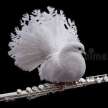
Introduction:
Ice hockey is a team sport played on ice, where players use sticks to shoot a hard rubber disc called a puck into their opponent's goal. The sport originated in Canada in the 19th century, where it was played by British soldiers stationed there. The game quickly became popular in Canada, and by the early 20th century, ice hockey had become the country's national sport.
From Canada, ice hockey spread to other parts of the world, including the United States, Europe, and Russia. Today, ice hockey is a major sport played in many countries around the world, with the National Hockey League (NHL) in North America being the top professional league.
Ice hockey is renowned for its furious action and aggressive play, with players body checking opponents and skating at tremendous speeds on the ice. The sport is entertaining to watch and enjoyable to play since it calls for a combination of speed, skill, and toughness.
Ice hockey is practised at all levels, from youth leagues to professional leagues, and is a well-liked sport at international competitions like the Winter Olympics. New technology and rules are constantly being implemented in the sport to enhance gameplay and safety. Ice hockey is still a great sport with a storied past and devoted following despite its numerous changes.
Equipment for Ice Hockey
The equipment used in ice hockey includes skates, a stick, a puck, and protective gear. Skates are worn on the feet and have sharp blades on the bottom to allow players to glide on the ice. The stick is used to handle and shoot the puck. The puck is a hard rubber disc that is propelled by the stick and used to score goals.
Protective gear includes a helmet, shoulder pads, elbow pads, gloves, shin guards, and a mouth guard. The helmet is required to protect the head and face from injury. Shoulder pads and elbow pads protect the upper body from hits and falls. Gloves protect the hands and wrists, while shin guards protect the lower legs. A mouth guard is worn to protect the teeth and prevent concussions. The amount of protective gear required can vary depending on the player's age and level of play.
Playing surface
The playing surface of ice hockey is a rectangular rink made of ice, with dimensions of 200 feet by 85 feet. The rink is surrounded by boards that are typically four feet high, which help keep the puck in play. The ice is divided into three zones: the defensive zone, the neutral zone, and the offensive zone.
The rink is marked with various lines, including the blue lines, which divide the rink into three zones; the red line, which marks the centre of the rink; and the goal line, which marks the end of each zone and the location of the goals.
The faceoff circles are located at the centre of the rink and at each end, and they are used to start play after stoppages in play. The goal crease is a semi circular area in front of each goal, where only the goaltender is allowed to play the puck.
The playing surface of ice hockey is designed to promote fast-paced action and physical play, while also providing a safe and controlled environment for players.
Rules and gameplay
The ideal of ice hockey is to score further pretensions than the opposing party. The game is played with six players on the ice at a time one goaltender and five skaters. Players use sticks to shoot a hard rubber slice called a puck into their opponent's thing.
Some of the crucial rules and gameplay principles of ice hockey include
• Off sides : Players can not enter the objectionable zone before the puck does. However, play is stopped and a combat occurs outside the zone, If they do.
• Icing : If a party shoots the puck from their own side of the red line all the way down the ice and the opposing party touches the puck first, play is stopped and a combat occurs in the offending party's zone.
• Penalties : The following conduct can affect in penalties for players tripping, high- sticking, and checking from before. A player may be given a minor penalty, major penalty, or misconduct discipline depending on how serious the offence was.
• Face-offs :At centre ice, a combat signals the morning of play. Face-offs are also used to renew it following pauses.
• Power plays and penalty kills :When a player is called for a penalty, their party is forced to play with smaller players. On the ice, the opposition side is allegedly serving from a power play. In disagreement, if the other side is penalised, a party may initiate a power play.
• Ice hockey players are permitted to hit opponents from before, still body checking isn't permitted.
• Checking : Ice hockey players are permitted to body check each other, but they aren't permitted to end for the head or strike opponents from before. The physicality of the game heavily relies on checking.
Overall Ice hockey is a rough, fast- paced sport with a complex set of regulations. The sport is delicate to play and fascinating to watch because it combines endowment, speed, and strategy






Comments
There are no comments for this story
Be the first to respond and start the conversation.